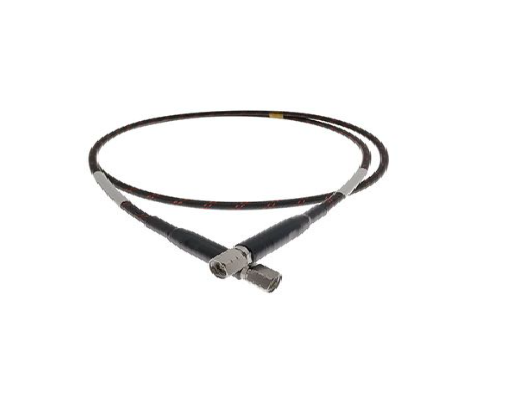
Cheek Reduction Surgery: A Comprehensive Guide To Achieving A Sculpted Facial Contour
Cheek reduction surgery, often referred to as “cheek reduction,” is a cosmetic procedure gaining popularity among individuals seeking to enhance their facial features and achieve a more sculpted appearance. This surgical technique involves the reduction of excess cheek fat and reshaping the cheeks to create a harmonious facial contour. In this comprehensive guide, we will delve into the intricacies of cheek reduction surgery, discussing its benefits, candidacy, the surgical procedure, recovery process, and potential risks.
Understanding Cheek Reduction Surgery
Cheek reduction surgery is a specialized cosmetic procedure designed to address concerns related to overly full or puffy cheeks. It is an effective method for achieving a more balanced and defined facial contour, which can enhance an individual’s overall appearance and self-confidence. This surgery is particularly popular among individuals who feel that their cheeks are disproportionately large or asymmetrical.
Benefits Of Cheek Reduction Surgery
- Improved Facial Proportions: One of the primary benefits of cheek reduction surgery is the enhancement of facial proportions. By reducing excess cheek fat, the surgeon can help create a more balanced and aesthetically pleasing appearance.
- Enhanced Self-Esteem: Many individuals who undergo cheek reduction surgery report a boost in their self-esteem and self-confidence. A more sculpted facial contour can help individuals feel better about their appearance.
- Customized Results: Cheek reduction surgery can be tailored to meet the unique needs and desires of each patient. Surgeons work closely with individuals to ensure their goals are met while maintaining a natural look.
Candidates For Cheek Reduction Surgery
Not everyone is an ideal candidate for cheek reduction surgery. Candidates typically share the following characteristics:
- Excess Cheek Fat: Candidates should have excess cheek fat that contributes to a puffy or overly full appearance.
- Good Overall Health: It’s essential for candidates to be in good overall health and have realistic expectations about the outcome of the procedure.
- Non-Smokers: Smoking can increase the risk of complications during and after surgery. Candidates are often required to quit smoking before the procedure.
- Realistic Expectations: Candidates must have realistic expectations about the results of the surgery and understand the potential risks involved.
The Cheek Reduction Surgery Procedure
Cheek reduction surgery is typically performed as an outpatient procedure under local or general anesthesia. The surgical technique may vary depending on the specific needs of the patient, but the general steps are as follows:
- Anesthesia: The surgeon administers anesthesia to ensure the patient’s comfort throughout the procedure.
- Incisions: Small incisions are made inside the mouth, along the natural creases of the cheeks, or in some cases, on the outer cheek. The choice of incision location depends on the surgical approach.
- Removal of Excess Fat: The surgeon carefully removes excess fat from the cheeks to create the desired contour. This step involves precise sculpting to achieve a natural appearance.
- Closure: After achieving the desired results, the incisions are closed with dissolvable sutures.
Recovery Process
The recovery process following cheek reduction surgery is relatively straightforward, but it’s crucial for patients to follow their surgeon’s post-operative instructions. Here’s what to expect during the recovery period:
- Swelling and Bruising: Swelling and bruising are common after cheek reduction surgery and typically peak within the first few days. Cold compresses can help reduce swelling.
- Pain Management: Discomfort is usually minimal and can be managed with prescribed pain medication.
- Dietary Restrictions: Patients may be instructed to follow a soft or liquid diet for a specified period to avoid putting pressure on the surgical site.
- Oral Hygiene: Good oral hygiene is essential to prevent infection. Patients may be advised to use a mild antiseptic mouthwash and avoid vigorous brushing near the incisions.
- Rest and Avoidance of Strenuous Activities: Patients are encouraged to get plenty of rest and avoid strenuous activities during the initial recovery period.
- Follow-up Appointments: Patients will have follow-up appointments with their surgeon to monitor progress and ensure proper healing.
Potential Risks And Complications
Like any surgical procedure, cheek reduction surgery carries potential risks and complications, including:
- Infection: Although rare, infection can occur at the incision sites. Proper oral hygiene and following post-operative instructions can help reduce this risk.
- Scarring: Scarring is minimal with cheek reduction surgery, as incisions are usually made inside the mouth or along natural creases.
- Numbness: Some temporary numbness in the cheeks is common after surgery but typically resolves over time.
- Asymmetry: Achieving perfect symmetry can be challenging, and minor asymmetry may persist post-surgery.
- Allergic Reaction: In rare cases, individuals may experience an allergic reaction to anesthesia or other medications used during the procedure.
Conclusion
Cheek reduction surgery offers a valuable solution for individuals seeking to improve facial proportions and achieve a more balanced and defined facial contour. With the guidance of a skilled surgeon and a thorough understanding of the procedure, eligible candidates can undergo this surgery with confidence. By carefully considering the benefits, candidacy, procedure, recovery process, and potential risks, individuals can make informed decisions to achieve their desired facial aesthetic through cheek reduction surgery. If you’re considering this procedure, consult with a board-certified plastic surgeon to explore your options and determine if cheek reduction surgery is right for you.



